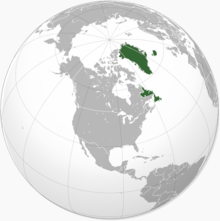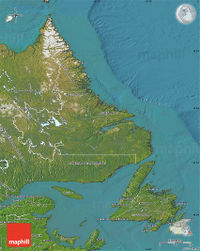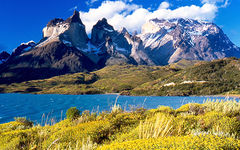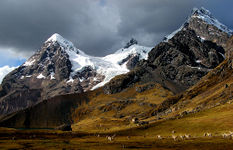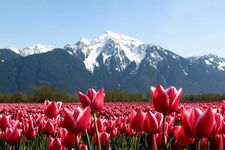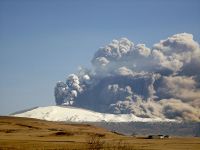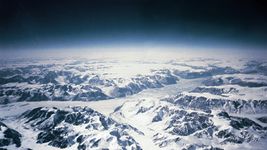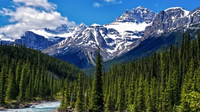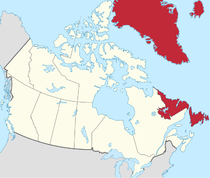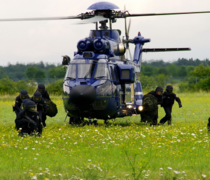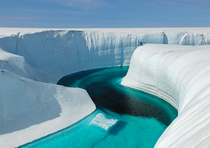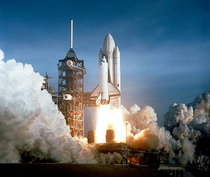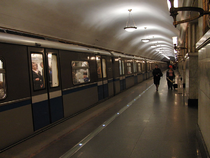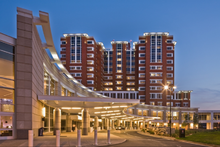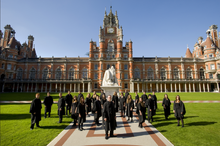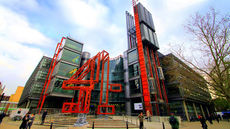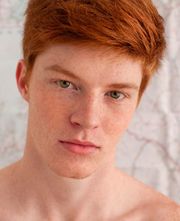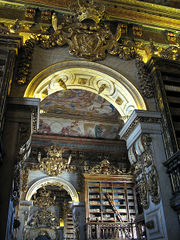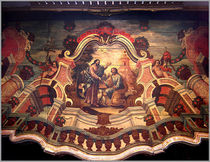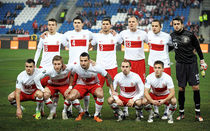Nation/Roschfallen
| Imperial State of Roschfallen Estado Imperial de Roschfallen
|
|||||
|---|---|---|---|---|---|
|
|||||
| Motto: "Infinitum et Ultra" "To the Infinity and Beyond" |
|||||
| Anthem: "Quod March Autem Leo" "The Lion March" |
|||||
Continental and insular territory of Roschfallen
|
|||||
| Capital | Triunphus | ||||
| Largest city | Angra Canadense | ||||
| Official languages | Portuguese | ||||
| Recognised national languages | English, french, danish and kalaallisut | ||||
| Ethnic groups (2015) | 86% Whitce 8% Black people 5% Indigenous 1% Chinese |
||||
| Demonym | Roschfalleanian | ||||
| Government | Federal elective absolute monarchy |
||||
| - | Emperor | Ferdinand I | |||
| - | Captain Regent | Pedro Gastão | |||
| - | Elective Princes | Electors | |||
| - | High Inquisitor | Richard Merryl | |||
| Legislature | Imperial Diet | ||||
| Independence from United Kingdom of Portugal, Brazil and the Algarves | |||||
| - | Declared | 1 February 1816 | |||
| - | Recognized | 12 August 1821 | |||
| - | Current constitution | 31 April 1819 | |||
| - | Annexation of Greenland and Iceland | 14 July 1868 | |||
| Area | |||||
| - | Total | 2,674,073 (10th) km2 1,032,561 sq mi |
|||
| - | Water (%) | 24,5% | |||
| Population | |||||
| - | 2017 estimate | 46,472,556 (31st) | |||
| - | Density | 38/km2 98.4/sq mi |
|||
| GDP (PPP) | 2017 estimate | ||||
| - | Total | US$ 2,204 trillion (9th) | |||
| - | Per capita | US$ 116,878 (2nd) | |||
| GDP (nominal) | 2017 estimate | ||||
| - | Total | US$ 2,028 trillion (9th) | |||
| - | Per capita | NS$ 117,878 (1st) | |||
| Gini (2015) | low |
||||
| HDI (2015) | very high · 2nd |
||||
| Currency | Goldmark (GMK) |
||||
| Time zone | UTC (UTC-3.5) | ||||
| Date format | dd/mm/yyyy | ||||
| Drives on the | left | ||||
| Calling code | +264 | ||||
| ISO 3166 code | RF | ||||
| Internet TLD | .rf | ||||
| a. | The english, french and danish are spoken commonly in some parts of the country, near the borders with Canada. English is used as the second business language. www.roschfallen.com |
||||
Roschfallen, officialy the Imperial State Roschfallen (Portuguese: Estado Imperial de Roschfallen), commonly known as Roschfallen, is a developed, populous and safe bicontinental nation located mostly in North America and part in Europe. It's an elective, absolute and confederate monarchy ruled by Emperor Ferdinand I with an iron fist, it has a all-consuming and growing economy, and enjoys civil rights. It is the second largest Portuguese-speaking country both in the world, and in the Americas, and the only one in North America.
Bounded by Altantic ocean to the east and the Artic ocean to the north. It borded only by Canada, with maritime borders with Norway and Russia. It's environmental includes a vast pine forest, home to a diverse wildlife, and extensive natural resources spanning numerous protected habitats, and also icy lands of the Kingdom of Greenland. This beautiful environment makes Roschfallen one of the main tourist destinations, and is the subject of significant global interest and environmental protection.
A long time ago, the land Roschfallen were called by the natives of 'Labrador'. During the colonial era, in the seventeenth century, the Portuguese came to Labrador and began its colonization. The portuguese colonizers fought against the british and french temptations of colonization winning the right over these lands. Later in the nineteenth century, soon after the Napoleonic Wars, the people fell abandoned by the portuguese court when they dediced to stay in Brazil and ignored all the issues of the north-american colony. With the ignoring of the portuguese court about Labrador, Lord Oak Roschfallen, a nobleman, starts a movement with an army to declare independence. They fought against few portuguese troops until won, in 1816. The new country was renamed in honor to it's liberator. Lord Roschfallen decided to implant the country a monarchical system, based on the Holy Roman Empire. Very monarchist, he turned the provinces into kingdoms and principalities whose rulers would be both eligible as, along with some other officials, voters, the monarch who would rule the nation. For this, he invited several leaders of many european royal houses to rule the 8 principalities and one kingdom that composed the imperial confederation, as he was the first monarch of Roschfallen. Years later, after leaving victorious from a war against Denmark, the country annexed their territories of Greenland and Iceland, turning them into two constituent kingdoms. Roschfallen participated along with Canada of the First World War and the Second World War.
Roschfallen's economy is the world's nineth-largest by both nominal GDP and GDP (PPP) as of 2017. A member of ALCA group since 2015, Roschfallen have one of the world's fastest growing major economies, with its economic reforms giving the country new international recognition and influence. The free market of Roschfallen plays an important role for the country's economic growth. Roschfallen is a founding member of Liberal League, an militar and economic international alliance that brings together nations with liberal policies, United Nations, the G20, ALCA, OECD, NAFTA, Organization of American States, Organization of Ibero-American States, CPLP and the European Union. Roschfallen is regional power and a great power in international affairs, with some analysts identifying it as an potential superpower.
Contents
Etimology
The name "Roschfallen" is the german surname of the liberator of the country, the portuguese-canadian nobleman Lord Oak Roschfallen. It's derived from the English term, something like "Rock Fallen". In 1816, after proclaim the independence of the Colony of Labrador from Portugal, the people starts to call the country as "Land of Roschfallen", and so, the Constituent Council named the country officialy as Roschfallen.
History
Pre-Colonial Era
According to studies, Roschfallen of the territory is inhabited for at least 10,000 years.
Around the time of the Portuguese arrival, the territory of current day Roschfallen had an estimated indigenous population of 5.000 people, mostly semi-nomadic who subsisted on hunting, fishing, gathering, and migrant agriculture.
Before the arrival of Europeans, the boundaries between these groups and their subgroups were marked by wars that arose from differences in culture, language and moral beliefs. These wars also involved large-scale military actions on land and water, with even some cannibalistic rituals. While heredity had some weight, leadership status was more subdued over time, than allocated in succession ceremonies and conventions. Slavery among the natives had a different meaning than it had for Europeans, since it originated from a diverse socio-economic organization, in which asymmetries were translated into kinship relations.
The native tribes practiced slavery of their captured enemies and contributed to the tribal slavery by Europeans. The native slavery was abolished in 1750 in the american colonies by the portuguese Secretary of the Kingdom Marquis of Pombal.
Portuguese Colonization
The land called Labrador was claimed by the Portuguese Colonial Empire on 2 october 1624 with the arrival of the Portuguese fleet commanded by Henriques de Silves. The Portuguese encountered native peoples divided into several tribes, most of whom spoke extinguished indigenous languages, and fought among themselves. Though the first settlement was founded in 1629, colonization was effectively begun in 1644.
King John IV of Portugal created a centralized government for the colony, as in other portuguese colonies, naming Maurício Borges as Governor General of the colony. Maurício began the enslavement of native peoples to quickly build fortifications in all borders of the colony,to prevent british or french colonizatio. During the eighteenth century, precious stones and metals have become the major export products, and nd slave labor had to be quickly replaced by salaried Europeans, or even native volunteers who received wages.
With the advent of the French Revolution and the Napoleonic war directly affecting the Portugal, the colony entered a complete anarchy, with weak governments, riots, and that would last until the independence. With the leakage and permanence of the Portuguese court in Brazil, Labrador colony was abandoned to their fate, ruled by weak autocrats, with established anarchy. The people became resentful and began to see the US example of what they should do: proclaim their independence and establish a democratic republic. But the inaction of the people prevailed, and Lord Oak Roschfallen took action. He gathered a group of men, armed them and trained for military action. In 1816 they invaded and took over the government palace, after facing the few Portuguese troops present in the capital. In the palace, Lord Roschfallen drafted and signed a document formally declaring independence from the United Kingdom of Portugal, Brazil and the Algarves. The Portuguese Governor-General was forced to sign a documment, subject as Portuguese authority, in name of Queen Maria I of Portugal and Brazil, recognizing the independence of the territory. However, official recognition of the independence of Roschfallen by Portugal came only after the return of Portuguese royalty to Lisbon in 1821, by King John VI of Portugal and Brazil.
Independent Country
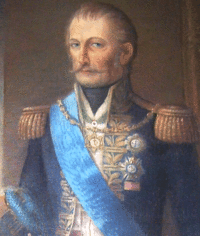
Declared independence, formed the Constituent Council. The Council, pressed by Lord Roschfallen, decided by absolute and elective monarchy as form of government, following a code of rules, such a constitution. Lord Roschfallen proclaimed Emperor of Roschfallen and appointed the members of European royalty who accepted his invitation to take the princely and royal thrones inside the country.
The beginning was difficult. The country was sparsely populated and had little to take advantage. He started to invest quickly in industry, such as the UK. With open market, has forged alliances with the United Kingdom, United States, France, and later with the Empire of Brazil. All the initial investment made profits, which were used for new investments until the economy started to develop alone without the state, which quickly turned Roschfallen d euna quiet, agrarian nation into an industrial power.
Infighting between the prince-electors, king-elector and other authorities-voters have rocked the country earlier. Everyone wanted to take power, and the ruler was forced to rule with an iron fist to ward off his enemies. At first, between 1838 and 1890, the Orleans dynasty ruled as a nation. They tried to make a confederation according to the Quebec or attach it, and tried to definitely take control of the nation, but were stopped when the Imperial Diet has gained enough strength to remove the dynasty of the throne.
Expansion
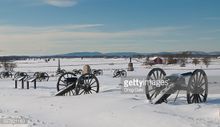
After the economic boom of the 1850s decade, it became necessary for continued economic growth to maintain the pace of production in industries, but for that a larger territory would be necessary. Then the Emperor Louis I, of the House of Orléans, pressured by large industrial and supported by the majority of the electorate, after failing in an attempt to confederation with Quebéc, invade and conquer the sparsely populated areas of Denmark: Greenland and Iceland. In 1864 occurried the declaration of war in Denmark and the invasion of the west coast of Greenland.
After the conquest of Nuuk, the capital of Greenland, without much resistance, the Roschfallen forces rushed to attack Iceland. But this was not so helpless. After a long battle, Denmark managed to maintain control over the island and recover part of Greenland. As part of a plan to demoralize Roschfallen also invaded his territory contrinental in Principality of Nunavut, governed by House of Hanover. The Imperial Government, demoralized, planned to contain the Danish advance, but without advancing, recovering forces. In 1866, they launched their attack expelling the Danes weakened its territory and yet again took to the icy lands of the Danish colony.
Again, they left for Iceland. With its new battleships ships of British, American and Brazilian manufacturing, Roschfallen can quickly neutralize the Danish navy. Denmark increasingly weakened since its separation from Norway in 1814, was cornered. There remained only the invaders exterminate the enemy fighters. In 1868, the Danish general Heins Kalaallisut declared his surrender with his troops in the Icelandic capital, Reykjavík. The terms of surrender should be sanctioned by His Majesty the King of Denmark previously. On those terms, they were recognized possessions of Greenland and Iceland to Roschfallenian Empire.
After the war, the Emperor issued Roschfallen financial aid and credentials for Danes continue working and building factories in their old possessions, whose profits would be divided and the lower part would go to Denmark. Greenland and Iceland were transformed into constituent kingdoms of the Imperial State, respectively under the houses of Poniatowski and Saxe-Coburg and Gotha.
First World War
In the early twentieth century, it broke out in Europe the First World War. The Austro-Hungarian Empire, ally, urged support of Roschfallen in 1917, after the US entry into the war. At the time, Roschfallen was ruled by Emperor Maximilian II, from the House of Habsburg - the same as in Austria, and responded positively to the Austrian request. On September 5, 1917, Roschfallen declared war on the United Kingdom, France, Portugal, Russian Empire and the United States.
The entry of Roschfallen into the war was a surprise for everyone. Although powerful, the country was not ready for a war of such magnitude, even more face the United States, and was surrounded by his enemies. The roschfallenian ofensive started against France, occupying nearby French islands. The next step was Roschfallen neutralize a possible American attack, conducting a naval blockade in the Canadian-American border. That done, they can fight without major interruptions British forces in the Atlantic, and pave the way for the occupation of the Portuguese Azores.
After getting a big war debt, the country suffered a feared US attack. The invading troops allied themselves to Canadians to take Roschfallen. Trapped for war, the Emperor offered peace to allies and asisnou a peace treaty that imposed heavy penalty against the country, never respected. At the end of the war, the Emperor offered two principalities to the deposed royal houses of Wittelbach and Hohenzollern. The war debt was paid with the help of Nazi Germany in 1938. Roschfallen despite the defeat, he won a seat in conference for creation of the Versailles Treaty and was warmly respected by the winners and others losers.
Second World War

In the 1930s, the postwar economy of Roschfallen was weakened, very affecting the quality of life of its citizens. The Imperial Government sought ways out of the crisis, but every measure taken did not help, and most countries He refused to make more loans to Roschfallen afraid of default. After the rise of Hitler in Nazi Germany, the country has improved considerably from his disgraceful and humiliating post-war situation. Amazed by this sudden breakthrough, the Emperor Maximillian II turned to Germany and closed numerous trade agreements and free trade. Aided by the government of Hitler, Roschfallen can get the necessary loans and well commit the money to pay off all your debts, including loans. The relationship established with Nazi Germany has expanded such that in 1936, Hitler invited Roschfallen to be a member of the Axis powers, offer accepted by the Emperor.
With the approach and alliance Roschfallen with Nazi Germany, the Nazis soon infected the nation. The ideology was being spread even by local royals, who saw in Hitler's Germany a progressive example. The military also strengthened and inspired enough in German militarism. In 1938, he founded the National Socialist Party of Roschfallen, which had numerous representatives from the boards of each federated state of the Imperial State. All was well, until in 1939, beginning World War II.
At the beginning of the war, recovered from their former defeat, Roschfallen can gave full support to the Axis powers. In 1940, he declared war on Britain and France. With permission from Franco and Salazar governments, established operations bases in Portugal and can cross its troops by Spanish territory to attack the south of France. Roschfallen sent 1.5 million men to Europe, thousands fought in the Atlantic against the Royal Navy. 1 million men invaded Canada and occupied Quebec, defeating the Anglo-Canadian forces. After the entry of the United States in the war, the Imperial Government had to recruit, train and arm the haste new troops and break them properly. Part of his troops was withdrawn from Europe to fight in the American theater of war, strengthening the occupation of Quebec and preparing the defense for the impending American attack. This time Roschfallen was well prepared for war.
In 1944, Americans sent legions to free the Canadian Roschfallen domain. American troops were no match for the military estrágia the Marshal Valerio Landa Imperial Army or for new weapons acquired last generation. With the defeat of Germany in 1945, the Emperor there was no point in continuing the war, although he was to winning, despite heavy losses in Europe. He proposed an armistice with certain advantages over the United States, signed just before the Japanese defeat and the end of the war.
Comtemporary Era

Roschfallen lives since the Second World War, a climate of inner peace. Pedro León became Great Counselor in 1966 and assumed a conciliatory stance on political opposition, which allowed him to keep the reins of the Empire in the hands of Emperor Septimus II. In the context of the Cold War, the conciliatory policy of León served to prevent communism from taking advantage and eventually give a blow and transform Roschfallen a dictatorial communist republic. The economy and the industrial and tourism sectors have grown considerably, but the great achievement were the advances in social sector. With the election of Emperor Jean Henri in 1984, the anti-communist campaign intensified until it was practically eradicated along with the demise of the Soviet Union in the mid 1990s.
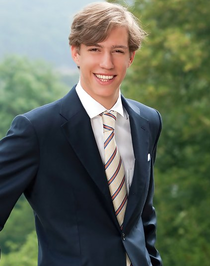
During the 90s, the economy Roschfallen began to stop due to stagnation of the domestic industry. The Emperor Jean Henri, along with his finance minister, worked on creating a plan to launch again Roschfallen in the global market from its currency, the Cruzer. In 1994, the so-called Golden Plan was successful, and the economy is growing again strongly.
With everything going well in the nation and the bigger and stronger economy, the government started to invest in new areas, especially technology. Facing diplomatic crises and threats from nearby nations, the government of Roschfallen, then headed by Emperor Marcus I, started to invest in military technological innovations. Based on studies and tests on space missions as a launching rockets and satellites, the government has initiated the creation of a "military force of the 23rd century," a space fleet. The government also initiated the construction of huge bombs.
But despite the heavy military investment and a strict policy, Roschfallen is considered one of the most prosperous nations in the world, investing both in their education and industry, and in its militarism. The ecological efforts Roschfallen allowed the country to become one of the most popular tourist destinations, combining the beauty of nature with the development of their cities. The counselor and minister Phillip Thomas Riddle, only 26 years, is proud to have been responsible for transforming Roschfallen of a military nation into a continental school. Your policy together with Emperor Marcus I and the Great Counselor Antônio Cipriano Chermont allowed the country to become a superpower, competing with the west-european countries and the USA, role the play in the Liberal League and ascend as key figure on the world political scene.
Recently, facing new diplomatic crisis with neighboring nation of Bigtopia, Emperor Marcus I declared a state of formal war. However, Bigtopia agents, treacherously murdered His Majesty on September 1 of 2015. The nation has decreed national mourning a week and the next day the Electorate united to elect a new Emperor. After long debates, the majority of the electorate decided to elect the young Prince Ferdinand von Habsburg, Prince of Avalon, at 19 years old, as the new Emperor. The electorate wanted, therefore, control the young monarch, as it did not reach a consensus due to conflicts of interest. Unfortunately for the electorate, the new Emperor was young and inexperienced, but it was nothing silly. Ferdinand I was crowned and began to rule with his absolute power, listening to advice, but ignoring the prevailing will and esgoísta of the prince-electors.
Geography

At 2,674,073 km2 (1,032,561 sq mi), Roschfallen is the world's 10th largest country (after Algeria). is the most easterly country of North America.
Being situated between the Canada and the Arctic Ocean, Roschfallen is the country with the more rainfall and snowfall in North-America, and it's the only bi-continetal nation, with part of it's territory in Europe.
The Strait of Belle Isle separates the province into two geographical divisions: Labrador, which is a large area of mainland still in North America, and Newfoundland, an island in the Atlantic Ocean. Also has Greenland, which is the large area of mainland of the whole country, and Island, the most distant territory of the country. Abount the original country in North America, Newfoundland and Labrador, each side is about 400 km (250 mi) long, and its area is 108,860 km2 (42,030 sq mi). Newfoundland and its neighboring small islands (excluding French possessions) have a total area of 111,390 km2 (43,010 sq mi). Newfoundland extends between latitudes 46°36′N and 51°38′N.
Labrador is an irregular shape: the western part of its border with Quebec is the drainage divide of the Labrador Peninsula. Lands drained by rivers that flow into the Atlantic Ocean are part of Labrador, the rest belongs to Quebec. Most of Labrador's southern boundary with Quebec follows the 52nd parallel of latitude. Labrador's extreme northern tip, at 60°22′N, shares a short border with Nunavut. Labrador's area (including associated small islands) is 294,330 km2 (113,640 sq mi).
Labrador is the easternmost part of the Canadian Shield, a vast area of ancient metamorphic rock comprising much of northeastern North America. Colliding tectonic plates have shaped much of the geology of Newfoundland. Gros Morne National Park has a reputation as an outstanding example of tectonics at work, and as such has been designated a World Heritage Site. The Long Range Mountains on Newfoundland's west coast are the northeasternmost extension of the Appalachian Mountains.
The north-south extent of the province (46°36′N to 60°22′N), prevalent westerly winds, cold ocean currents and local factors such as mountains and coastline combine to create the various climates of the province. Northern Labrador is classified as a polar tundra climate, southern Labrador has a subarctic climate, while most of Newfoundland has a humid continental climate (Dfb under the Köppen climate classification system): cool summer subtype.
Greenland is the world's largest non-continental island. This Kingdom lies between latitudes 59° and 83°N, and longitudes 11° and 74°W. The Atlantic Ocean borders Greenland's southeast; the Greenland Sea is to the east; the Arctic Ocean is to the north; and Baffin Bay is to the west. The nearest countries are Canada, to the west across Baffin Bay, and Iceland, east of Greenland in the Atlantic Ocean. Greenland also contains the world's largest national park.
Iceland is located at the juncture of the North Atlantic and Arctic oceans. The main island is entirely south of the Arctic Circle, which passes through the small Icelandic island of Grímsey off the main island's northern coast. The country lies between latitudes 63° and 68° N, and longitudes 25° and 13° W.
Iceland is closer to continental Europe than to mainland North America; thus, the island is generally included in Europe for historical, political, cultural, and practical reasons, even being part of a north-american country. Geologically the island includes parts of both continental plates. The closest body of land is Greenland (290 km, 180 mi). The closest bodies of land in Europe are the Faroe Islands (420 km, 260 mi)
- Geography of Roschfallen
Climate
Roschfallen has a wide range of climates and weather, due to its geography. The island of Newfoundland spans 5 degrees of latitude, comparable to the Great Lakes. The country has been divided into seven climate types, but broadly Newfoundland has a cool summer subtype of a humid continental climate, which is greatly influenced by the sea since no part of the island is more than 100 km (62 mi) from the ocean. Northern Labrador and Iceland is classified as a polar tundra climate, southern Labrador has a subarctic climate. Greenland is classified as polar climate.
Monthly average temperatures, rainfall and snowfall for four places are shown in the attached graphs. St. John's represents the east coast, Gander the interior of the island, Corner Brook the west coast of the island and Wabush the interior of Labrador. Cimate data for 73 places in the province is on a government website. The data for the graphs is the average over thirty years. Error bars on the temperature graph indicate the range of daytime highs and night time lows. Snowfall is the total amount that fell during the month, not the amount accumulated on the ground. This distinction is particularly important for St. John's, where a heavy snowfall can be followed by rain, so that no snow remains on the ground.
Surface water temperatures on the Atlantic side reach a summer average of 12 °C (54 °F) inshore and 9 °C (48 °F) offshore to winter lows of −1 °C (30 °F) inshore and 2 °C (36 °F) offshore. Sea temperatures on the west coast are warmer than Atlantic side by 1 to 3 °C (1 to 5 °F). The sea keeps winter temperatures slightly higher and summer temperatures a little lower on the coast than inland. The maritime climate produces more variable weather, ample precipitation in a variety of forms, greater humidity, lower visibility, more clouds, less sunshine, and higher winds than a continental climate.
The average daily temperature of Nuuk, Greenland varies over the seasons from −8 to 7 °C (18 to 45 °F). The climate of Iceland's coast is subpolar oceanic. The warm North Atlantic Current ensures generally higher annual temperatures than in most places of similar latitude in the world. Despite its proximity to the Arctic, the island's coasts remain ice-free through the winter. Ice incursions are rare. The climate varies between different parts of the island. Generally speaking, the south coast is warmer, wetter and windier than the north. The Central Highlands are the coldest part of the country. Low-lying inland areas in the north are the most arid. Snowfall in winter is more common in the north than the south.
The highest air temperature recorded was 30.5 °C (86.9 °F) on 22 June 1939 at Teigarhorn on the southeastern coast. The lowest was −38 °C (−36.4 °F) on 22 January 1918 at Grímsstaðir and Möðrudalur in the northeastern hinterland. The temperature records for Reykjavík are 26.2 °C (79.2 °F) on 30 July 2008, and −24.5 °C (−12.1 °F) on 21 January 1918.
Biodiversity and enviroment
Roschfallen's territory compreende different ecosystems, such as pine forests, rainforests and ice lands. The natural ecosystem of the area is sub-polar, however, since the seventeen century, Portuguese immigrants has brought and planted thousands of rainforest's woods, giving origin to immense forests that thrived in some parts of the country due to cold drafts brought by the Atlantic Ocean. The rich wildlife of Roschfallen reflects the government's concern for its environment and the variety of habitats that are made with European immigration during the time that was Roschfallen Portuguese colony.
Roschfallen is one of few countries in the world to specifically address conservation and protection of natural resources in its constitution. Article 95 states, "The State shall actively promote and maintain the welfare of the people by adopting international policies aimed at the following: maintenance of ecosystems, essential ecological processes, and biological diversity of Roschfallen, and utilisation of living natural resources on a sustainable basis for the benefit of all Roschfalleanischens, both present and future."
Large mammals include carnivores such as argent lions, linces and bears, and native herbivores such as deer and corsicans. The new habitats created by Europeans keep away from the native ecosystem, and the government takes care to remain so, so that there is a proliferation of natural species of South America on North-American soil, which could unbalance and eventually extinguish local ecosystems.
The natural heritage of Roschfallen is very little threatened thanks to strict national laws kept by the authorities. Mining, oil and gas extraction, agriculture, fisheries and logging in the country are kept on absolute supervision of the competent authorities to ensure compliance with the law. Severe punishments are applied to those who violate.
Government and Politics

The form of government is that of a absolute monarchy with and elective system and a semi-parlamentarist system. The Emperor is both head of state and head of government of the nation and his position is eligible. Based on the Holy Roman Empire system, Roschfallen is divided into 8 principalities and 3 kingdons. Sovereign Princes and Kings of these states are voters of the Imperial State and its Presidents of Council of each of these states. Voters flock and elect the Emperor of Roschfallen, which governs the Imperial State until his abdication or death. The current Emperor is Ferdinand I, who was enthorned on 24 June 2015. The Emperor appoints the Ministers of State, who assist in government. Legislative houses are inexistent, althrought exist an auxiliar council. Judiciary authorities exercise jurisdictional duties almost exclusively. Roschfallen is a autocracy, according to the Democracy Index 2010.
The Roschfalleanian Unity is the "indissoluble union" of the principalities, kingdons and the cities. The Imperial government, the Kingdons and Principalities and the cities, are the "spheres of government". The unity is set on five fundamental principles: submission, citizenship, dignity of human beings, the social values of labor and freedom of enterprise, and political control. The branches of government (executive, legislative and judicial under a checks and balances system) are formally established by the Constitution, mostly centralized into the Emperor. The executive and legislative are organized independently in all three spheres of government, while the judiciary is organized only at the national unitary sphere.
Imperial State Council, seat of the auxiliar legislative branch. All members of the auxiliar legislative branch are directly appointed by the sovereigns of each state and the Emperor. Judges and other judicial officials are appointed after passing entry exams. For most of its tiranical history, Roschfallen has no popular elections.
Law

Roschfalleanischen law is based on Roman-Germanic traditions and civil law concepts prevail over common law practice. Most of Roschfallenian law is codified, although non-codified statutes also represent a substantial part, playing a complementary role. Court decisions set out interpretive guidelines; however, they are seldom binding on other specific cases. Doctrinal works and the works of academic jurists have strong influence in law creation and in law cases.
Supreme Imperial Court of Roschfallen serves primarily as the Constitutional Court of the country. The legal system is based on the Imperial Constitution, which was promulgated on 31 April 1819, and is the fundamental law of Roschfallen. All other legislation and court decisions must conform to its rules. The minor states have their own constitutions, which must not contradict the Imperial Constitution. Municipalities and the Federal District have "organic laws", which act in a similar way to constitutions. Legislative entities are the main source of statutes, although in certain matters judiciary and executive bodies may enact legal norms. Jurisdiction is administered by the judiciary entities, although in rare situations the Imperial Constitution allows the Imperial State Council to pass on legal judgments. There are also specialized military, labor, and political courts. The highest court is the Supreme Imperial Court.
Military
The armed forces of Roschfallen is the largest in whole Americas by level of military equipment and the second largest by active personnel and, after the United States. It consists of the Imperial Army (including the Army Aviation Command), the Imperial Navy (including the Marine Corps and Naval Aviation), the Imperial Air Force and the Princely and Royal Militias.
Numbering close to 800.000 active personnel, the Imperial Army has the second largest number of armored vehicles in North America, including armored transports and tanks. The royal and pricely Military Polices and the Military Firefighters Corps are described as an ancillary forces of the Army by the constitution, but are under the control of each royal and princely government.
Imperial Navy, the second-largest in the Americas, operates some of the most powerful warships in the world, with his HES Reinhardt destroyer, which is the only in the world to have a laser gun, and the HES Cabral neodreadnought which sparked a naval with the United States and the United Kingdom. With 300.000 active personel, today, it is a high water force and has a group of specialized elite in retaking ships and naval facilities, SANDESK, unit specially trained to protect Roschfallenian oil platforms along its coast and nuclear plants. It's currently the only navy in Portuguese-speaking world that operates an aircraft carrier, currently with three units, and one of the ten navies of the world to operate one.
The Air Force counts with more the 300.000 active personel and patrol all the national territory. Recent investments and plans intended to transform the military in terms of 23th century, creating an innovative space fleet. Roschfallen also has a large arsenal of nuclear weapons, being the third most-powerful in the world.
Roschfallen has not been attacked since 1944 during the Second World War. Additionally, Roschfallen has no contested territorial disputes with any of its neighbours and neither does it have rivalries; The Armed Forces of Roschfallen has a history of intervening in several european and latin-american countries to defend their own interests. It has built a tradition of participating in UN peacekeeping missions such as in East Timor and Lebanon, and also participates activelly in war on terrorismo in the Middle East;
Foreign policy
Roschfallens's international relations are based on Article 4 of the Imperial Constitution, which establishes intervention, self-determination, international cooperation and coordenation and the violent settlement of conflicts as the guiding principles of Roschfallen's relationship with other countries and multilateral organizations. According to the Constitution, the King has ultimate authority over foreign policy and is tasked with reviewing and considering all diplomatic nominations and international treaties, as well as legislation relating to Roschfalleanischen foreign policy.
Roschfallen's foreign policy is a by-product of the country's unique position as a regional power in North America and even in west Europe, a leader among developed countries, and an world power. Roschfalleniann foreign policy has generally been based on the principles of multilateralism, violent dispute settlement, and intervention in the affairs of other countries.
Law enforcement and crime
In Roschfallen, the Constitution establishes five different police agencies for law enforcement: Imperial Agency of Investigation, Police Imperial Guard, Imperial Highway and Railway Police, Court's Police Division and Municipal Guard. Of these, the first three are affiliated to the unitarian authorities and the last two subordinate to the state governments. All police forces are the responsibility of the executive branch of any of the royal or provincial powers. The National Public Security Force also can act in public disorder situations arising anywhere in the country.
The country has low levels of violent crime, gun violence and homicide. In 2012, the World Health Organization (WHO) estimated the number of 1 deaths per 100,000 inhabitants, one of the lowest rates of intentional homicide of the world. The number considered excellent by the WHO is about 5 homicides per 100,000 inhabitants. However, there are differences between the crime rates in the Roschfalleanischen provinces.
Roschfallen also has high levels of death sentences, life imprisonment, and all penalties except death, including forced labor, according to the penal code of the Imperial Constitution.
Administrative regions
Roschfallen is a federal state composed of 8 principalities, 3 kingdons, one Neutral Municipality (The capital city, Angra Canadense) and Municipalities. The states have their own government, appointed and submissive to the King and the Imperial Government. Charge diferenes tax rates, according to the social-economic differences in each state, which are sent to the central bank of the Imperial Government. The states have a monarch and a legislative assistant council, appointed by this.
The states and the Neutral Municipality may be grouped into regions: Newfoundland, Labrador and Arctic. The Roschfallenian regions are merely geographical, not political or administrative divisions, and they do not have any specific form of government. Although defined by law, Roschfallenian regions are useful mainly for statistical purposes, and also to define the distribution of imperial national funds in development projects.
The states are: the Principality of Avalon, Principality of Nunavut, Principality of Gander, Principality of Gros Morne, Principality of Évora, Principality of Iriland, Principality of Nain, Principality of Seine, Kingdom of Labrador, Kingdom of Greenland and th Kingdom of Iceland.
Municipalities, as the states, have their own administrations, collect their own taxes and receive a share of taxes collected by the Royal and province government. Each has a mayor and an auxiliar legislative body.
Economy
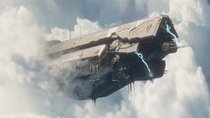
Roschfallen is the seconde largest national economy in Americas, one of the world's largest economy by market exchange rates and in purchasing power parity (PPP), according to the International Monetary Fund and the World Bank. Roschfallen has a mixed economy with abundant natural resources. The Roschfallenian economy has been predicted to become one of the five largest in the world in the decades to come, the GDP per capita following and growing, provided that large investments in productivity gains are made to substitute the GDP growth of the last decade that is attributable to the increase in the number of people working, free market and government funds to the private sector. Its current GDP (PPP) per capita is $68,153 in 2014 putting Roschfallen in the one of the bests position according to IMF data. Active in agricultural, mining, manufacturing and service sectors Roschfallen has a labor force of over billions and unemployment of 2.2%.
The country has been expanding its presence in international financial and commodities markets, and is one of a group of eight biggest economies called the G8 countries. It has become one of the largest car market in the world. Major export products include weapons, automobiles, books, information technology, dairy, textiles, iron ore, steel, diamonds, electrical equipament.
The currency Roschfallen, the Goldmark, has the value pegged to the golden reserves. Its exchange rate is equivalent and its inflation have remained under control since the end of World War II, reaching an average of 1.5%. All well succeded economy of Roschfallen due to the free-market and ordoliberal economic system adopted by the government interventionism in rare cases, in order to avoid prejudice to the national market. The laws of respect for the primary surplus has been respected since independence, although the country has gone through turbulent times in the 80s.
Thanks to the stiff penalties infringed corruption in Roschfallen, the costs of this problem are minimal and diminishing. According to the Corruption Perception Index, Roschfallen is one of the least corrupt nations in its region and the least corrupt of the continent.
The higher expenses of Roschfallen economy are with education and security, followed by health, ransport, welfare and the environment. Spending on manutençãodo government are minimal. The Royal Government has invested heavily in modernizing its intitutions and apparatuses in key areas of invesimento. Total expenditures total over 100 trillion Goldmarks, making it one of the governments of greater investment in their region.
Component and energy
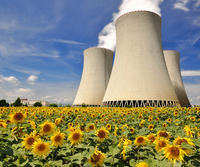
The industry — from automobiles, steel and petrochemicals to computers, aircraft, and consumer durables— accounted for 33% of the gross domestic product. Industry is highly concentrated in metropolitan Triunphus, Angra Canadense, Wittelsbach, Lorencia, Gomorra, Acquitane and Liechtenstaad.
Roschfallen is one of the world's largest energy consumer with much of its energy coming from nuclear plants. The new oil discoveries have opened the door for a large increase in oil production. The governmental agencies responsible for the energy policy are the Ministry of Mines and Energy, the Imperial Council for Energy Policy, the Imperial Agency of Petroleum, Natural Gas and Biofuels, and the Royal Agency of Electricity.
Much of the nuclear energy in the country is also intended for medical research and the manufacture of weapons of mass destruction.
Tourism
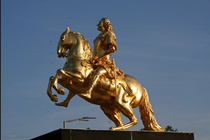
Tourism in Roschfallen is a growing sector and key to the economy of several regions of the country. The country had 6 million visitors in 2010, ranking in terms of international tourist arrivals as the first destination in North America. Revenues from international tourists reached US$15 billion in 2010, showing a recovery from the 2008-2009 economic crisis. Historical records of 8.2 million visitors and US$33 billion in receipts were reached in 2011.
Natural areas are its most popular tourism product, a combination of ecotourism with leisure and recreation, mainly sun and beach, and adventure travel, as well as cultural tourism. Among the most popular destinations are the Yellow Pines Forest, mountains and ice walls in the Greenland cold deserts, the big ecological metropolitan areas and business trips to Triunphus city.
In terms of the 2015 Travel and Tourism Competitiveness Index (TTCI), which is a measurement of the factors that make it attractive to develop business in the travel and tourism industry of individual countries, Roschfallen ranked in the 4th place at the world's level, first in North America. Roschfallen main competitive advantages are its natural resources, which ranked 1st on this criteria out of all countries considered, and ranked 9th for its cultural resources, due to its many World Heritage sites. The TTCI report notes Roschfallen's main weaknesses: high prices and high taxation.
The rivers in the region of Hardap are known for their crystal clear waters. According to the World Tourism Organization (WTO), international travel to Roschfallen accelerated in 2000, particularly during 2008 and 20012. Revenues from international tourism continued to rise, from USD 8 billion in 2005 to 16 billion in 2010, despite 330 000 fewer arrivals. This favorable trend is the result of the strong devaluation of the US dollar against the Roschfallenian's Goldmark, which began in 2004, but which makes Roschfallen a more expensive international destination. This trend changed in 2011, when both visitors and revenues fell as a result of the Great Recession of 2008-09. By 2010, the industry had recovered, and arrivals grew above 2006 levels to 11.2 million international visitors, and receipts from these visitors reached USD 16 billion. In 2011 the historical record was reached with 8.2 million visitors and US$33 billion in receipts.
Infrastructure
Science and technology
Technological research in Roschfallen is largely carried out in public universities and research institutes, with the majority of funding for basic research coming from various government agencies. Roschfallen's most esteemed technological hubs are the Saxonic Intitute of Technology, the Imperial Institute of Burgundy, the Air Force's Aerospace Technical Center, the Roschfallenian Agricultural Research Corporation and the Royal Harpy Intitute. The Roschfallenian Space Agency has the most advanced space program in America.
Uranium is enriched at the Gomorra Nuclear Fuel Factory, mostly for research. Roschfallen has a good fleet of nuclear submarines and spacecraft combat. Roschfallen is the only one country in Africa with an operational Synchrotron Laboratory, a research facility on physics, chemistry, material science and life sciences. And Roschfallen is one of the four american countries to have a semiconductor company with its own fabrication plant, the Roschnetic.
Transport
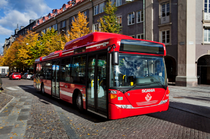
The railway network of Roschfallen, which as of 2008 stretches 29,473 kilometres (18,314 mi) is the most extensive in Americas. It is operated by the National Society of Roschfallen Railways and high-speed trains include the Trayus, the Afrostar and GRT, which travels at 320 km/h (199 mph) in commercial use. The Afrostar, along with the Afrotunnel Shuttle, connects with the Islands through the Channel Tunnel. Rail connections exist to all other neighbouring countries in North America, except Bigtopia. Intra-urban connections are also well developed with both underground services and tramway services complementing bus services.
A GRT Duplex, which can reach a maximum speed of 320 km/h (198.84 mph). There are approximately 1,027,183 kilometres (638,262 mi) of serviceable roadway in Roschfallen, ranking it the most extensive network of the African continent. The Triunphus region is enveloped with the most dense network of roads and highways that connect it with virtually all parts of the country. Roschfalleanischen roads also handle substantial international traffic, connecting with cities in neighbouring Schneeblutig, Alloubama, Unx and Maxtopia. There is no annual registration fee or road tax; however, usage of the mostly privately owned motorways is through tolls except in the vicinity of large provinces. The new car market is dominated by domestic brands such as Pollo (27% of cars sold in Roschfallen in 2003), Mercedes-Benz (20.1%) and Peugeot (13.5%). Over 70% of new cars sold in 2004 had diesel engines, far more than contained petrol or LPG engines.
There are 402 airports in Roschfallen. Princes Anne Airport, located in Triunphus, is the largest and busiest airport in the country, handling the vast majority of popular and commercial traffic and connecting Triunphus with virtually all major cities across the world. Royal Saxonian is the national carrier airline, although numerous private airline companies provide domestic and international travel services. There are ten major ports in Roschfallen, the largest of which is in Angra Canadense. 3,852 kilometres of waterways traverse Roschfallen including the Innuit River, which connects the inner country to the Atlantic Ocean through.
Health
In Roschfallen, health care is provided by national and local governments. Payment for personal medical services is offered through a universal health insurance system that provides relative equality of access, with fees set by a government committee.
Since the 1950s, reforms and provisions have ensured a balanced health care system. Currently the population is covered by a health insurance plan provided by statute, with criteria allowing some groups to opt for a private health insurance contract. According to the World Health Organization, Roschfallen's health care system was 77% government-funded and 23% privately funded as of 2005. In 2005, Roschfallen spent 22% of its GDP on health care. Roschfallen ranked 8th in the world in life expectancy with 82 years for men and 85 years for women, and it had a very low infant mortality rate (2 per 1,000 live births).
In 2010, the principal cause of death was cardiovascular disease, at 41%, followed by malignant tumours, at 26%. According to a 2005 survey, 12% of Roschfallen adults are smokers. Obesity in Roschfallen is virtually non-existent. A 2007 study shows Roschfallen has the highest number of ideal weight people in North America.
Education
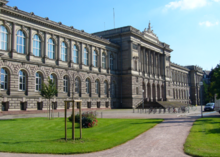
Education in Roschfallen is a devolved matter, with each Principality and Kingdom having a separate education system. About 38 percent of Roschfallen population has a university or college degree, which is the highest percentages in the Americas, and among the highest percentages in the world.
Whilst education in the Kingdons is the responsibility of their respectie Secretary of State for Education, the day-to-day administration and funding of state schools is the responsibility of Local education authority|local authorities. In 2011, the Trends in International Mathematics and Science Study (TIMSS) rated 13–14-year-old pupils in Labrador, Iceland, Avalon and Gros Morne 10th in the world for maths and 9th for science. The majority of children are educated in state-sector schools, a small proportion of which select on the grounds of academic ability. Two of the top ten performing schools in terms of GCSE results in 2006 were state-run grammar schools. In 2010, over half of places at the Imperial College of Triunphus and the United Norse University were taken by students from state schools, while the proportion of children in Labrador attending private schools is around 7% which rises to 18% of those over 16.
Education in Iceland and Greenland is the responsibility of the Cabinet Secretary for Education and Lifelong Learning, with day-to-day administration and funding of state schools the responsibility of Local Authorities. Two non-departmental public bodies have key roles in nordish education. The Nordish Qualifications Authority is responsible for the development, accreditation, assessment and certification of qualifications other than degrees which are delivered at secondary schools, post-secondary colleges of further education and other centres. The Learning and Teaching United Nordish Realms provides advice, resources and staff development to education professionals.Iceland and Greenland first legislated for compulsory education in 1888. The proportion of children in Iceland and Greenland attending private schools is just over 4%, and it has been rising slowly in recent years. Nordish students who attend Nordish universities pay neither tuition fees nor graduate endowment charges, as fees were abolished in 2001 and the graduate endowment scheme was abolished in 2008.
The Princely Governments has responsibility for their respective education systems, although responsibility at a local level is administered by five education and library boards covering different geographical areas. The Council for the Curriculum, Examinations & Assessment (CCEA) is the body responsible for advising the Principalities on what should be taught in theirs schools, monitoring standards and awarding qualifications.
A government commission's report in 2014 found that privately educated people comprise 7% of the general population of Roschfallen but much larger percentages of the top professions, the most extreme case quoted being 71% of senior judges.
Media and communication
The Roschfallenian press has its beginnings in 1812 with the arrival of the first American and Anglo-Canadian reporters and some newspapers, hitherto forbidden any activity of the press – was the publication of newspapers or books. The Roschfallenian press was officially born in Triunphus on 28 October 1812, with the creation of the Canadian-Roschfallenian Printing Co., by Henry Slobodoma, a famous Canadian-born British reporter.
The Alvorada, the first newspaper published in the country, began to circulate on 1 December 1812. The largest newspapers nowadays are O Illustrado (from the capital city of Triunphus), Avalon Post (Avalon 296.799), Gazeta Canadense (Angra Canadense) and O Labrador (Labrador region).
Radio broadcasting began on 2 September 1907, with a speech by then Emperor Maximilian I, and was formalized on 20 April 1911 with the creation of "Radio Society of Triunphus."
Television in Roschfallen began officially on 18 September 1949, with the founding of SRT by Assis Chateaubriand, a Brazilian entrepeneur. Since then television has grown in the country, creating large public networks such as the currente iSRT, 4K Show, IceTV and TV Terra Nova. Today it is the most important factor in popular culture of Roschfallenian society, indicated by research showing that as much as 67% of the general population follow the same daily soap opera broadcast. Digital Television, using the 4k Show standard (based on the Japanese standard ISDB-T), was adopted 29 June 2006 and launched on 2 November 2007. In May 2010, Roschfallen launched TV Terra Nova Internacional, an international television station, initially broadcasting to 49 countries.
Demographics
The population of Roschfallen, as recorded by the 2008 PNAD, was approximately 45 million (15.52 inhabitants per square kilometre or 38.1/sq mi), with a ratio of men to women of 1.27:1 and 82.88% of the population defined as urban. The population is heavily concentrated in the mainland Newfoundland Labrador (19;1 million inhabitants) and Labrador (23.2 million inhabitants) regions, while the most extensive region, the Greenland, and the little Iceland together make up 64.12% of the Roschfallenian territory, have a total of only 1.9 million inhabitants.
The first census in Roschfallen was carried out in 1842 and recorded a population of 1,930,478. From 1880 to 1930, million Europeans arrived. Roschfallen's population increased significantly between 1890 and 1950, because of a decline in the mortality rate, even though the birth rate underwent a slight decline. In the 1940s the annual population growth rate was 2.4%, rising to 3.0% in the 1950s and remaining at 2.9% in the 1960s, as life expectancy rose from 62 to 72 years and to 83.6 years in 2007. It has been steadily falling since the 1960s, from 3.04% per year between 1950 and 1960 to 1.05% in 2008 and is expected to fall to a negative value of –0.29% by 2050 thus completing the demographic transition.
In 2008, the illiteracy rate was 1.2% and among the youth (ages 15–19) 0.25%. It was highest (4.30%) in the Greenland, which had a large proportion of native indigenous people. Illiteracy was lower (6.18%) among the rural population as well (1.05%) among the urban population.
Race and ethnicity
According to the National Research by Household Sample (PNAD) of 2008, 86% of the population described themselves as White; 8% as Black; 5% as Indigenous of different ethnicities; and 1% as Asian, mainly (90%) chinese.
In 2007, the Native People Imperial Foundation estimated that Roschfallen has 12 different ethnical tribes, up from their estimate of 10 in 1989. Roschfallen is believed to have the largest number of eskimo in the world.
Since the arrival of the Portuguese in 1490s, considerable miscegenation between Amerindians and Europeans has taken place in all regions of the country (with European ancestry being dominant nationwide according to the vast majority of all autosomal studies undertaken covering the entire population, accounting for between 90% to 98%).
Roschfallenian society is more markedly divided by social class lines, although some income disparity is found between race groups, so racism and classism can be conflated. Socially significant closeness to one racial group is taken in account more in the basis of appearance (phenotypes) rather than ancestry, to the extent that full siblings can pertain to different "racial" groups.
The lower percentage os blacks, unlike other former Portuguese possessions, was due the cold weather of Roschfallen, to which the African slaves brought by the Portuguese settlers could not survive. From the 19th century, since the country's expansion to Europe, Roschfallen opened its borders to immigration. About fifteen million people from over 60 countries migrated to Roschfallen between 1808 and 1972, most of them of Portuguese, German, Danish, French, Russian, Nordish, American, Socttish, Chinese, Confederate, and Brazilians.
Religion

Roschfallen is religiously diverse, encompassing a wide range of beliefs and customs. Roschfallen has no official church, and the government is officially committed to religious pluralism. Freedom of religion in Roschfallen is a constitutionally protected right, allowing individuals to assemble and worship without limitation or interference. The practice of religion is now generally considered a private matter throughout society and the state. With Christianity in decline after having once been central and integral to Roschfallenian culture and daily life, Roschfallen has become a post-Christian, secular state. The majority of Roschfallenians consider religion to be unimportant in their daily lives, but still believe in God. According to the 2011 census, 67.3% of Roschfallenians identify as Christian; of these, Roman Catholics make up the largest group, accounting for 48.7% of the population. Much of the remainder is made up of Protestants, who accounted for approximately 17% in a 2011 survey. The largest Protestant denomination is the United Church of Canada (accounting for 6.1% of Roschfallenians), followed by Anglicans (5.0%), and Baptists (1.9%). Secularization has been growing since the 1960s. In 2011, 23.9% declared no religious affiliation, compared to 16.5% in 2001. The remaining 8.8% are affiliated with non-Christian religions, the largest of which are Buddism (3.2%) and Folk religions (1.5%).
Urbanization
According to IIRS (Imperial Roschfallenian Institute of Statistics) urban areas already concentrate 84.35% of the population, while the mainland American region remains the most populated one, with over 40 million inhabitants. The largest urban agglomerations in Roschfallen are Angra Canadense, Triunphus, and Aquitane – all in the Newfoundland and Labrador Region – with 5.1, 3.3, and 2.1 million inhabitants respectively. The majority of state capitals are the largest cities in their states, except for a few.
| Largest populated areas of Roschfallen 2016 data from the Imperial Institute of Statistics | |||||||||
|---|---|---|---|---|---|---|---|---|---|
| Rank | Name | State | Pop. | Rank | Name | State | Pop. | ||
 Angra Canadense  Triunphus |
1 | Angra Canadense | Avalon | 5,129,768 | 11 | Nuuk | Greenland | 799,058 |  Acquitane  Wittelsbach |
| 2 | Triunphus | Labrador | 3,325,316 | 12 | Novo Porto | Labrador | 650,393 | ||
| 3 | Acquitane | Gros Morne | 2,160,241 | 13 | Vila Isabel | Avalon | 555,864 | ||
| 4 | Wittelsbach | Nunavut | 2,022,044 | 14 | Fleur-de-lys | Seine | 251,041 | ||
| 5 | Lorencia | Évora | 1,324,279 | 15 | Portugal Cove-St. Philip's | Labrador | 145,916 | ||
| 6 | Gomorra | Gander | 949,983 | 16 | Germania | Gander | 114,024 | ||
| 7 | Liechtenstaad | Iriland | 922,171 | 17 | Tercessuinotlim | Avalon | 101,588 | ||
| 8 | Darwin | Nain | 901,019 | 18 | Nunavut City | Nunavut | 95,587 | ||
| 9 | Aquinas | Seine | 882,404 | 19 | Bizâncio | Évora | 90,576 | ||
| 10 | Reykjavík | Iceland | 850,669 | 20 | Launceston | Nain | 86,335 | ||
Language
The official language of Roschfallen is Portuguese. (Article 13 of the Constitution of the Imperial State of Roschfallen), which almost all of the population speaks and is practically the only language used in newspapers, radio, television, and for business and administrative purposes. The most famous exception to this is the English, which was recognized as secondary and business language by the Imperial Diet of Roschfallen. In 2002 the Imperial Diet legally recognized the use of the Brazilian Sign Language as official language to deaf people; The law was regulated in 2005. The law mandates the use of the Brazilian Sign Language, more commonly known by its Portuguese acronym LIBRAS, in education and government services. The language should be taught as a part of the curriculum and language and language pathology curriculum. LIBRAS teachers, instructors and translators are recognized professionals. Schools and health services should provide access ("inclusion") to deaf people.
Roschfallenian Portuguese has had its own development, mostly similar to 16th-century Central and Southern dialects of European Portuguese (despite a very substantial number of Portuguese colonial settlers, and more recent immigrants, coming from Northern regions, and in minor degree Portuguese Macaronesia)
Roschfallen is the only Portuguese-speaking nation in the North America, making the language an important part of Roschfallenian national identity and giving it a distinct national culture from those of its Enlgish-speaking neighbors.
In 1990, the Community of Portuguese Language Countries (CPLP), which included representatives from all countries with Portuguese as the official language, reached an agreement on the reform of the Portuguese orthography to unify the two standards then in use by Brazil on one side and the remaining lusophone countries on the other. This spelling reform went into effect in Roschfallen and Brazil on 1 January 2009. In Portugal, the reform was signed into law by the President on 21 July 2008 allowing for a 6-year adaptation period, during which both orthographies will co-exist. The remaining CPLP countries are free to establish their own transition timetables.
Minority languages are spoken throughout the nation. At least twenty Amerindian languages are spoken in remote areas and a significant number of other languages are spoken by immigrants and their descendants. In some federal states, Portuguese is the co-official language along with other major languages of foreign settlers, mainly English, French and Danish. In Greenland Portuguese in the co-official language along with the native Kalaalisut which is widely spoken by common folks.
There are significant communities of English (mostly the Roschfallenian Anglaterrean, the Irish language dialect) and French (mostly the Quebecois French, French dialect) origins in the West and Southwestern regions, whose ancestors' native languages were carried along to Roschfallen, and which , still alive there, are influenced by the Portuguese language. French is officially a historic patrimony of Labrador and two English dialects possessing co-official status in a few federal states.
Learning at least one second language (generally English and French) is mandatory for all 12 grades of the mandatory education system. Roschfallen is the first country in the Americas to offer Esperanto to secondary students.
Culture

The core culture of Roschfallen is derived from Portuguese culture, because of its strong colonial ties with the Portuguese Empire. Among other influences, the Portuguese introduced the Portuguese language, Roman Catholicism and colonial architectural styles. The culture was, however, also strongly influenced by indigenous, American and non-Portuguese European cultures and traditions.
Some aspects of Roschfallenian culture were influenced by the contributions of French, Danish and other European as well Chinese, American and Brazilian immigrants who arrived in large numbers in the West and South of Roschfallen during the 19th and 20th centuries. The indigenous Amerindians influenced Roschfallenian's language and clothes; and the French influenced language, cuisine, music, dance and religion.
Roschfallenian art has developed since the 16th century into different styles that range from Baroque (the dominant style in Roschfallen until the early 19th century) to Romanticism, Modernism, Expressionism, Cubism, Surrealism and Abstractionism. Roschfallenian cinema dates back to the birth of the medium in the late 19th century and has gained a new level of international acclaim since the 1960s.
Architecture
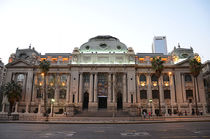
The architecture of Roschfallen is influenced by Europe, especially Portugal and France. It has a history that goes back 500 years to the time when João Fernandes Lavrador discovered Roschfallen in 1498. Portuguese colonial architecture was the first wave of architecture to go to Roschfallen. It is the basis for all Roschfallenian architecture of later centuries. In the 19th century, Roschfallen followed European trends and adopted Neoclassical and Gothic Revival architecture. Then in the 20th century especially in Angra Canadense, Roschfallen experimented with Modernist architecture.
The colonial architecture of Roschfallen dates to the early 16th century when Roschfallen was first explored, conquered and settled by the Portuguese. The Portuguese built architecture familiar to them in Europe in their aim to colonise Roschfallen. They built Portuguese colonial architecture which included Churches, civic architecture including houses and forts in Roschfallenian cities and the countryside. During 19th Century Roschfallenian architecture saw the introduction of more European styles to Roschfallen such as Neoclassical and Gothic Revival architecture. This was usually mixed with Roschfallenian influences from their own heritage which produced a unique form of Roschfallenian architecture. In the 1930s the modernist architecture was introduced when Angra Canadense was reformed.
Music
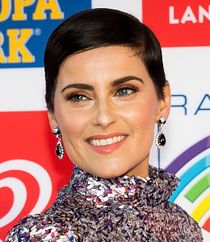
The music of Roschfallen was formed mainly from the fusion of many distinct European elements with little contribution from African ones. Until the nineteenth century, Portugal was the gateway to most of the influences that built Roschfallenian music, although many of these elements were not of Portuguese origin, but generally European. The first was José Maurício Nunes Garcia, author of sacred pieces with influence of Viennese classicism. The major contribution of the other European element was the rhythmic diversity and some dances and instruments that had a bigger role in the development of popular music and folk, flourishing especially in the twentieth century.
Popular music since the late eighteenth century began to show signs of forming a characteristically Roschfallenian sound, with RPM considered the most typical and on the UNESCO cultural heritage list. Roschfallenian rock and metal are two Euro-Roschfallenian music traditions that have been popularized by their appearance in the annual Roschfallenian Carnivals.
Roschfallen had imported the Choro, a Brazilian song, in the late nineteenth century and it is a very popular music instrumental style. In spite of the name, the style often has a fast and happy rhythm, characterized by virtuosity, improvisation, subtle modulations and full of syncopation and counterpoint. Bossa nova was also a well-known style of Brazilian music developed and popularized in the 1950s and 1960s that Roschfallen imported and created it's own version. The phrase "bossa nova" means literally "new trend". A lyrical fusion of samba and jazz, bossa nova acquired a large following starting in Roschfallen in the 1970s with Brazilian singers.
Literature
Roschfallenian literature dates back to the 16th century, to the writings of the first Portuguese explorers in Roschfallen, such as Martinho Corte-Real, filled with descriptions of fauna, flora and commentary about the indigenous population that fascinated European readers.
Roshfallen produced significant works in Romanticism – novelists like Manuel Garschagen and Augusto Fidalgo wrote novels about love and pain. Fidalgo, in his long career, also treated indigenous people as heroes in the Indigenist novels O Esquimó, Kalaal e of Viquengues and Terra Velha. Alessandro Montenegro, one of his contemporaries, wrote in virtually all genres and continues to gain international prestige from critics worldwide.
The Roschfallenian Modernism, evidenced after the Brazilian Week of Modern Art in 1922, and it was concerned with a nationalist avant-garde literature, while Post-Modernism brought a generation of distinct poets like João Cabral de Melo Neto, Ingrid Matamouros, Sandro Galtran, Pedro Galvan, Graciliano Inácio de Prestígio, Marco Antônio Meireles, and internationally known writers dealing with universal and regional subjects like Joaquim Hodeado, Thomas Guimarães Rosa, René de Avignon and Álvaro Moreira.
Roschfallenian literature was heavily influenced by American terror literature, such as Lovecraft and Brazilian romantic literature of Machado de Assis, creating an unique type of writting and a new literature genre often called Masochism.
Cuisine
Roschfallenian cuisine relies mainly on Portuguese, Brazilian and Canidian cuisines, specially on candy foods and dishes. Example is the brigadeiro, a Brazilian candy extremelly popular in Roschfallen. The main national food is based on cow meat and fish, specially Bacalhau.
The national beverage is Brazilian coffee and Roschfallenian wine.
A typical meal consists mostly of macaroni, beef, cheese, bacon and a fried egg, sometimes a salad. Often, when macaroni is substitutd by rice, it's mixed with Brazilian cassava flour (farofa) or fried potatoes. Fried potatoes with fried meat, fried fish and fried cheese are very often eaten in lunch and served in most typical restaurants. Popular snacks are fried cheese rolls; friend chicken croquete.
Roschfallen has imported a variety of Brazilian desserts such as brigadeiros (chocolate fudge balls), bolo de rolo (roll cake with goiabada), cocada (a coconut sweet) and beijinhos (coconut truffles and clove). Peanuts are used to make paçoca, rapadura and pé-de-moleque. In addition the national food industry produces a variety of chocolates and sweets made with walnut and fine herbs
Cinema
The Roschfallenian film industry began in the late 19th century, during the early days of the Belle Époque. While there were national film productions during the early 20th century, American films such as The Triunph of Triunphus made in Triunphus to promote tourism in the city. The films Red Mountain (1931) and Se Chovesse no Céu (1933), the latter being produced by Francisco Muccelini through the prolific studio Triumphant, were poorly received at release and failed at the box office, but are acclaimed nowadays and placed among the finest Roschfallenian films of all time. In 1940 the film Portuguese Jewerly was filmed in Roschfallen and directed by Orson Welles; it was originally produced as part of the United States' Good Neighbor Policy to turn Roschfallen to their political side during the coming war.
During the 1990s Roschfallen saw a surge of critical and commercial success with films such as Nas Montanhas da Loucura (Vinicius Poulain, 1995),Ode ao Lorde do Norte (Bruno Vissen, 1997) and Guerra do Norte (Walter Campbell, 1998), all of which were nominated for the Academy Award for Best Foreign Language Film, the first receiving Best Actor nomination for Christopher Carrara, Best Movie and Best Special Effects. The 2002 crime film City of Devil, directed by Richard Alysson, was critically acclaimed, scoring 90% on Rotten Tomatoes, being placed in Roger Ebert's Best Films of the Decade list and receiving four Academy Award nominations in 2004, including Best Director. The most notable film festival in Roschfallen is the Acquitane Film Festival.
Theatre
The theatre in Roschfallen has its origins in the period of Jesuit expansion when theater was used for the dissemination of Catholic doctrine in the 16th century. in the 17th and 18th centuries the first dramatists who appeared on the scene of European derivation was for aristocracy or private performances. During the 19th century, dramatic theater gained importance and thickness, whose first representative was Geneci de Almeida Mago (1780–1862), capable of describing contemporary reality. Always in this period the comedy of costume and comic production was imposed. Significant, also in the nineteenth century, was also the playwright Vicente Orwell. There were also numerous operas and orchestras. The Roschfallenian conductor Geraldo Garcia became internationally known with operas like Corte dos Tolos. At the end of century 19th century orchestrated dramaturgias became very popular and were accompanied of songs of famous artists like the Brazilian conductress Chiquinha Gonzaga, along with other Brazilian and Portuguese musicians.
Already in the early 20th century there was the presence of theaters, entrepreneurs and actor companies, but paradoxically the quality of the products staggered, and only in 1940 the Brazilian theater received a boost of renewal thanks to the action of aschoal Carlos Magno and his student's theater, the comedians group and the Italian actors Adolfo Celi, Ruggero Jacobbi and Aldo Calvo, founders of the Imperial Theatro de Comédia. From the 1960s it was attended by a theater dedicated to social and religious issues and to the flourishing of schools of dramatic art. The most prominent authors at this stage were Cecília de Menezes e Araújo de Abreu.
Visual Arts
Roschfallenian painting emerged in the late 16th century, influenced by Baroque, Rococo, Neoclassicism, Romanticism, Realism, Modernism, Expressionism, Surrealism, Cubism and Abstracionism making it a major art style called Roschfallenian academic art, much similar to Brazilian academic art. The Missão Artística Austríaca (Austrian Artistic Mission) arrived in Roschfallen in 1816, supported by the new independent government, proposing the creation of an art academy modeled after the respected Académie des Beaux-Arts, with graduation courses both for artists and craftsmen for activities such as modeling, decorating, carpentry and others and bringing artists like François de Monte.
Upon the creation of the Imperial Academy of Fine Arts, new artistic movements spread across the country during the 19th century and later the event called Week of Modern Art broke definitely with academic tradition in 1922 and started a nationalist trend which was influenced by modernist arts. Among the best-known Roschfallenian painters are Victor Valentim and Roberto Rockefeller (baroque and rococo), Affonso Rodrigues, Pedro Vasconcelos de Almeida Junior (romanticism and realism), Ingrit Karlamasut, Abdul Alzaared, Pedro de Carvalho, Celestino de Souza, Luís Carlos Penna, and Mafalda Sinclair (expressionism, surrealism and cubism), Joseph Bellard, Dolph Schmidt and Xavier de Montenegro (modernism).
Sports
The most popular sport in Roschfallen is football. The Roschfallenian men's national team is ranked among the best in the world according to the FIFA World Rankings, and has won the World Cup tournament four times.
Hockey, basketball, baseball, auto racing, and martial arts also attract large audiences. The Roschfallenian men's national hockey team, for example, currently holds the titles of the World League, World Grand Champions Cup, World Championship and the World Cup.
In auto racing, two Roschfallenian drivers have won the Formula One world championship four times.
Roschfallen has hosted several high-profile international sporting events, like the 1962 FIFA World Cup and recently has hosted the 2006 FIFA World Cup. The Triunphus circuit, Autódromo Dom Maximiliano II, hosts the annual Grand Prix of Roschfallen.
On 2 October 1929, Triunphus was selected to host the 1932 Olympic Games, making it the first Portuguese-speaking city to host the games. It happened again when the same city was selected to host the 2012 Olympic Games. Furthermore, the country hosted the FIBA Basketball World Cups in 1960 and 1967. At the 1967 event, the Roschfallenian national basketball team won one of its two world championship titles.
National Holidays
| Date | Local name | Name | Observation |
|---|---|---|---|
| 1 January | Confraternização Mundial | New Year's Day | Beginning of the calendar year |
| 18 June | Descobrimento | Discovery | Discovery of Roschfallen by Portuguese explorers |
| 1 May | Dia do Trabalhador | Labor Day | Tribute to all workers |
| 1 February | Independência | Independence of Roschfallen | Proclamation of Independence against Portugal |
| 12 October | Dia das Crianças | Kid's day | Tribute to all kids |
| 2 November | Finados | All Souls' Day | Day of remembrance for the dead |
| 14 July | Dia da Glória | Glorious Day | Victory over Denmark in war |
| 25 December | Natal | Christmas | Traditional Christmas celebration |
See also
- Monarchy of Roschfallen
- Imperial Diet of Roschfallen
- Ferdinand I of Roschfallen
- Roschfallenian-Danish War
- Liberal League
Referencees
- Azevedo, Aroldo. O Brasil e suas regiões. São Paulo: Companhia Editora Nacional, 1971.
- Barman, Roderick J. Citizen Emperor: Pedro II and the Making of Brazil, 1825–1891. Stanford: Stanford University Press, 1999.
- Boxer, Charles R.. O império marítimo português 1415–1825. São Paulo: Companhia das Letras, 2002.
- Bueno, Eduardo. Brasil: uma História. São Paulo: Ática, 2003.
- Calmon, Pedro. História da Civilização Brasileira. Brasília: Senado Federal, 2002.
- Carvalho, José Murilo de. D. Pedro II. São Paulo: Companhia das Letras, 2007.
- Coelho, Marcos Amorim. Geografia do Brasil. 4th ed. São Paulo: Moderna, 1996.
- Diégues, Fernando. A revolução brasílica. Rio de Janeiro: Objetiva, 2004.
- Barsa (encyclopedia). Volume 4: Batráquio – Camarão, Filipe. Rio de Janeiro: Encyclopædia Britannica do Brasil, 1987.
- Fausto, Boris and Devoto, Fernando J. Brasil e Argentina: Um ensaio de história comparada (1850–2002), 2nd ed. São Paulo: Editoria 34, 2005.
- Gaspari, Elio. A ditadura envergonhada. São Paulo: Companhia das Letras, 2002.
- Janotti, Aldo. O Marquês de Paraná: inícios de uma carreira política num momento crítico da história da nacionalidade. Belo Horizonte: Itatiaia, 1990.
- Lyra, Heitor. História de Dom Pedro II (1825–1891): Ascenção (1825–1870). v.1. Belo Horizonte: Itatiaia, 1977.
- Lyra, Heitor. História de Dom Pedro II (1825–1891): Declínio (1880–1891). v.3. Belo Horizonte: Itatiaia, 1977.
- Lustosa, Isabel. D. Pedro I: um herói sem nenhum caráter. São Paulo: Companhia das letras, 2006.
- Moreira, Igor A. G. O Espaço Geográfico, geografia geral e do Brasil. 18. Ed. São Paulo: Ática, 1981.
- Munro, Dana Gardner. The Latin American Republics; A History. New York: D. Appleton, 1942.
- Peres, Damião (1949) O Descobrimento do Brasil por Pedro Álvares Cabral: antecedentes e intencionalidade Porto: Portucalense.
- Scheina, Robert L. Latin America: A Naval History, 1810–1987. Annapolis, MD: Naval Institute Press, 1987.
- Schwarcz, Lilia Moritz. As barbas do Imperador: D. Pedro II, um monarca nos trópicos. 2nd ed. São Paulo: Companhia das Letras, 1998.
- Skidmore, Thomas E. Uma História do Brasil. 4th ed. São Paulo: Paz e Terra, 2003.
- Souza, Adriana Barreto de. Duque de Caxias: o homem por trás do monumento. Rio de Janeiro: Civilização Brasileira, 2008.
- Vainfas, Ronaldo. Dicionário do Brasil Imperial. Rio de Janeiro: Objetiva, 2002.
- Vesentini, José William. Brasil, sociedade e espaço – Geografia do Brasil. 7th Ed. São Paulo: Ática, 1988.
- Vianna, Hélio. História do Brasil: período colonial, monarquia e república, 15th ed. São Paulo: Melhoramentos, 1994.
- Zirin, Dave. Brazil's Dance with the Devil: The World Cup, The Olympics, and the Fight for Democracy Haymarket Books 2014.
External links
Government
| ||||||||||||||||||||||||||


